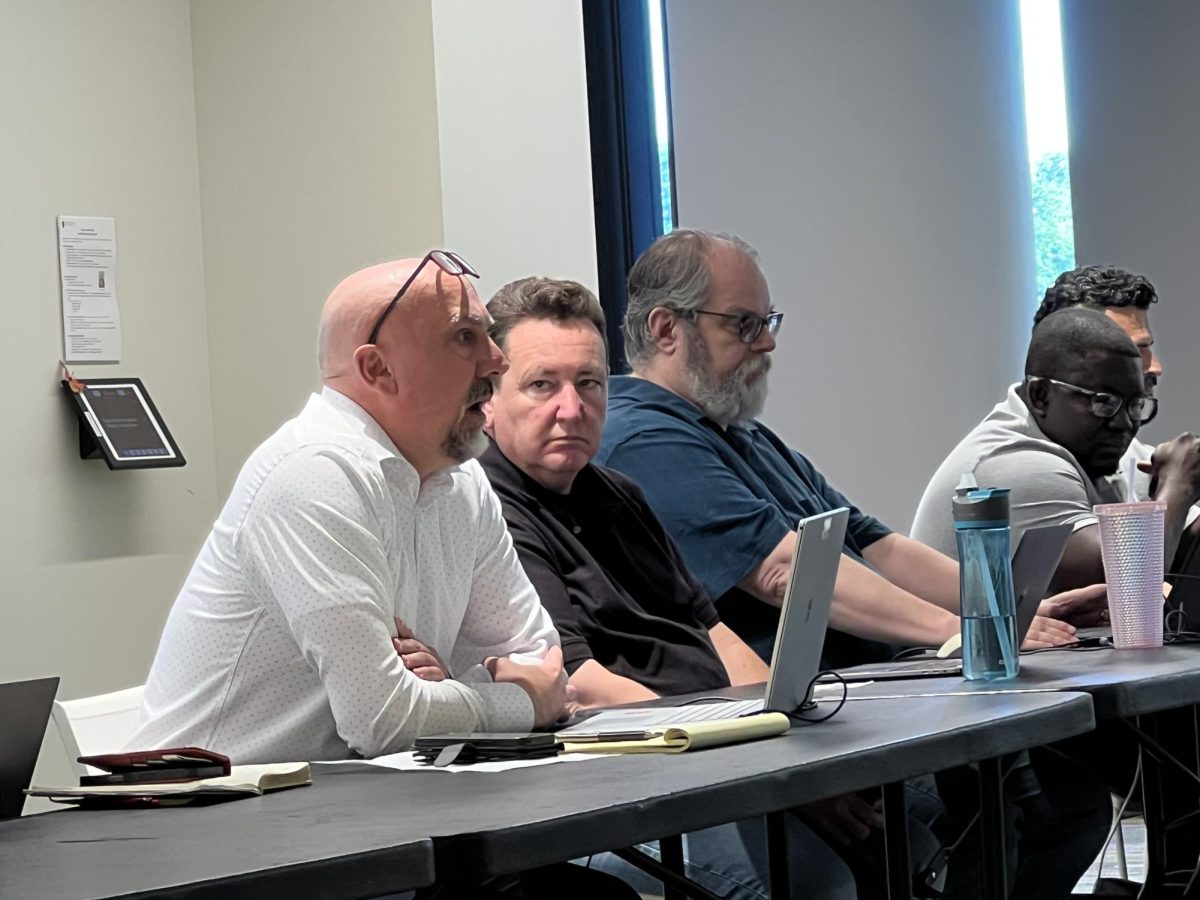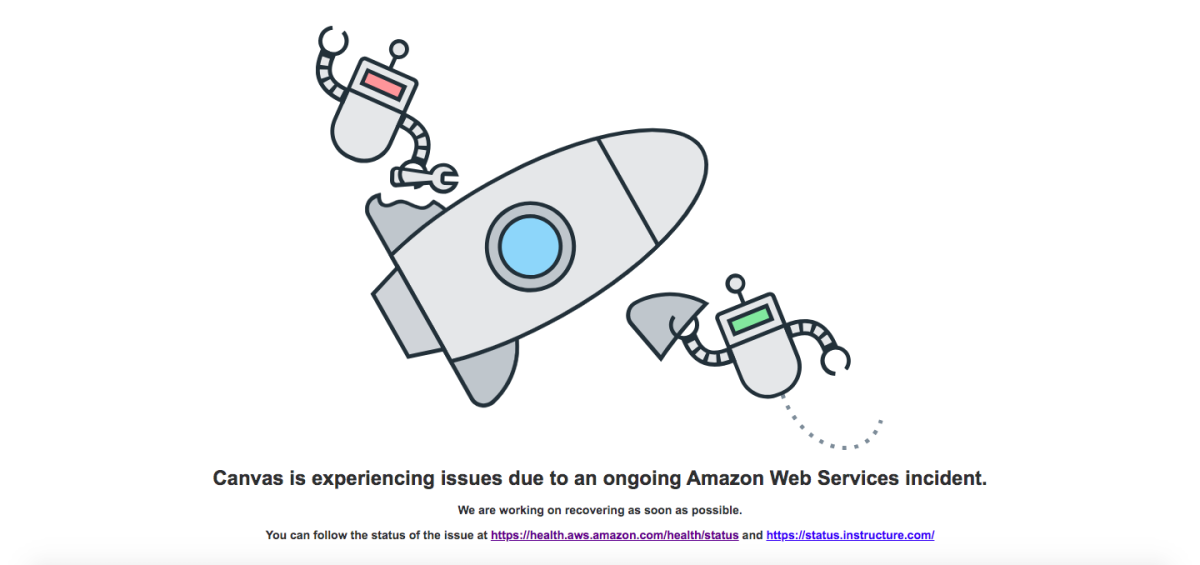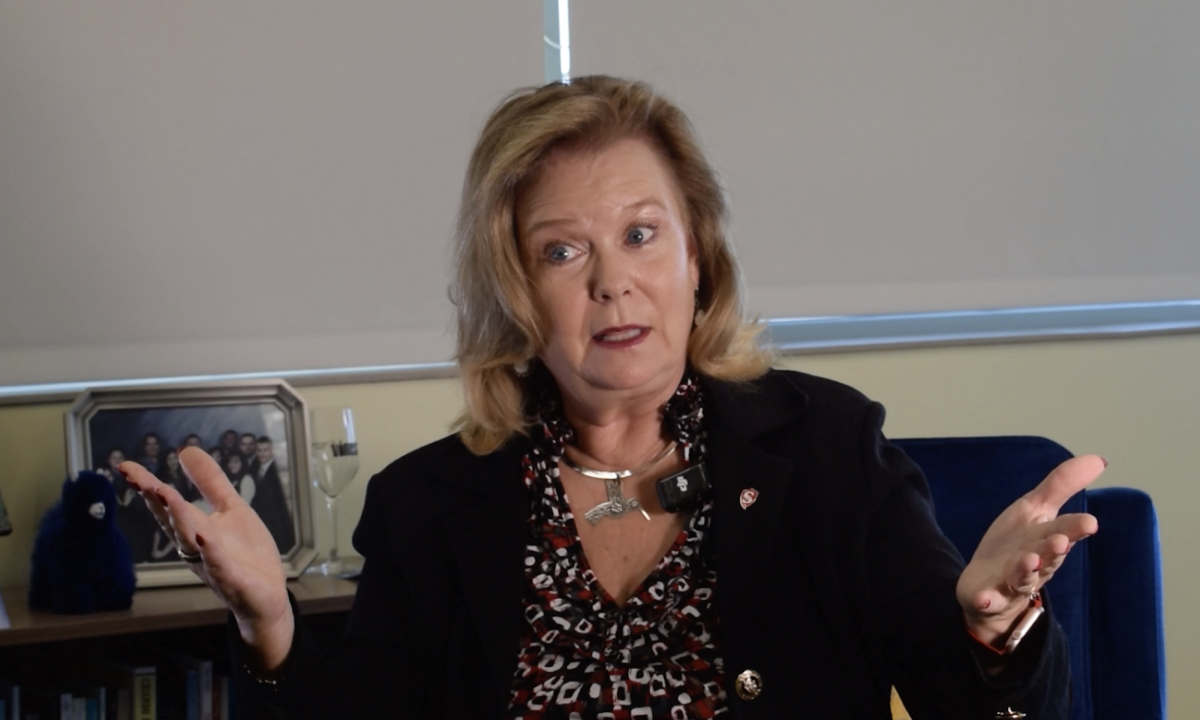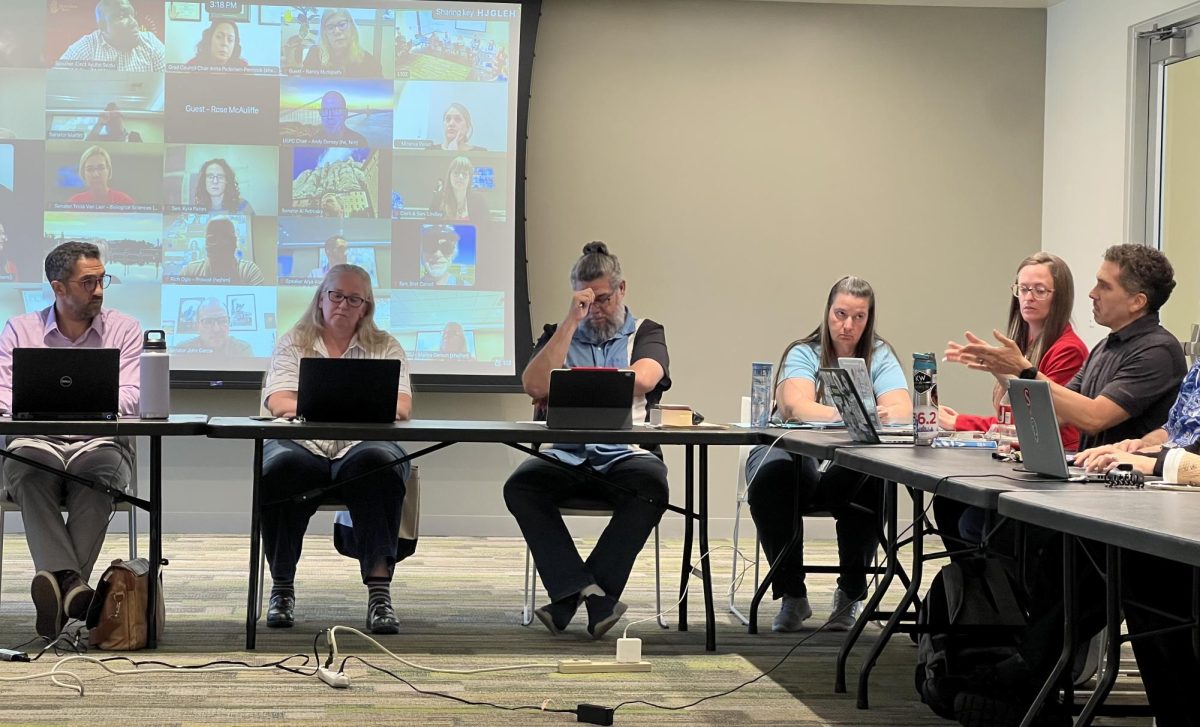In response to faculty concerns, the University President and vice presidents of various departments gathered to discuss the University’s budget situation with faculty and staff. The room was filled with members of the California State University Employee Union (CSUEU), who wore their union T-shirts in protest.
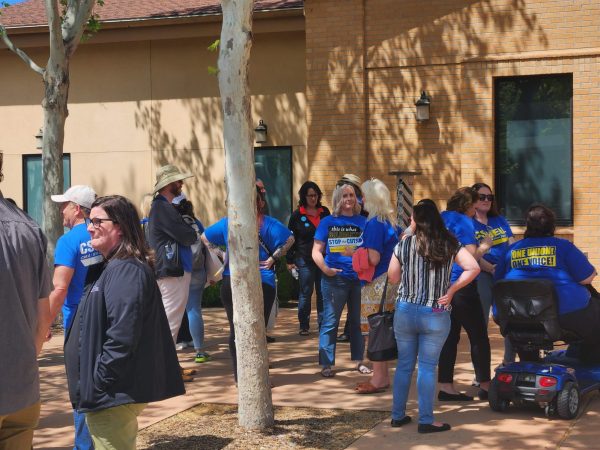
Administration explained during this April 14 meeting that the structural deficit has been a longstanding issue, magnified by other factors. President Britt Rios-Ellis called it “a perfect storm.”
Richard Ogle, the provost, noted, “If you go back the last 10 years and you look at our allocation from the institution and our actual expenditures, we have been managing anywhere from about a $3 million to about a $5 million structural deficit.”
According to Ogle, the University had previously managed the deficit using unspent funds from the CSU systems and one-time funds. One-time funds is money that is given to the university once, it is not part of the recurring budget. However, rising costs and potential cuts in state funding have worsened the situation. The deficit is now $11.6 million after recent cuts, and it could rise to $19.7 million if further state cuts are implemented.
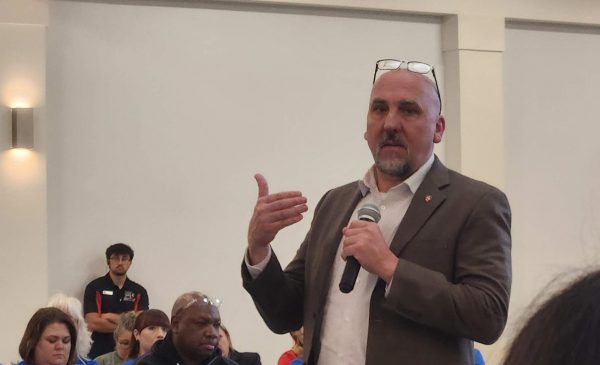
The University is making cuts to address the $19.7 million deficit, which has raised concerns about layoffs among staff and faculty. The University offered a Voluntary Separation Incentive Program, which 50 employees accepted, saving the University $5 million.
Thirteen staff members have been laid off and 18 staff layoffs in total have occurred — five due to the ending of a federal grant. All layoffs, including those tied to the grant, are represented by CSUEU. Rios-Ellis said the five employees affected by the grant’s end have expressed interest in returning, and the administration is exploring ways to keep them.
Michelle Kincanon, interim senior associate vice president for Human Resources, Equal Opportunity & Compliance, explained that the layoffs were issued in accordance with the CSU system’s collective bargaining agreement with CSUEU.
As part of the process and in line with the bargaining agreement, temporary and probationary employees were laid off first. Notices were sent to affected employees as required.
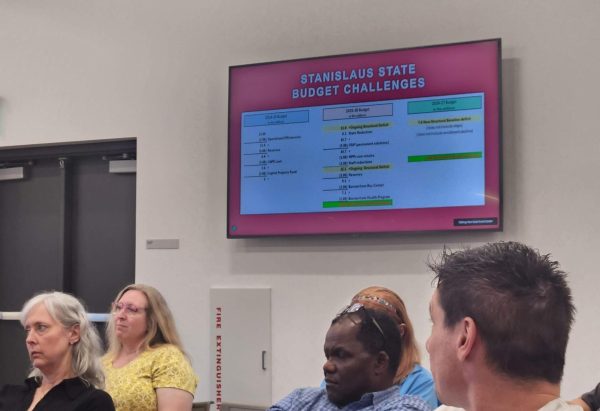
According to Rose McAuliffe, vice president for Business & Finance and the University’s chief financial officer, those layoffs have saved the University $1 million.
Those are not the only layoffs that have occurred. In January and February, the University decided not to retain 9% of Management Personnel Plan (MPP) personnel. McAuliffe noted that this saved the University $1.6 million.
Kincanon also clarified the role of MPP employees, saying the positions are required by various regulations, such as those in Title 5 of the California Code of Regulations and NCAA standards, among others.
McAuliffe said these cuts have reduced the next year’s deficit to $12.1 million. The University plans to cut an additional $5.1 million in 2025-26 and will borrow from the Recreation Center and Health Center, as well as use reserves, to cover the rest of the deficit.
“So, we’re trying to eliminate this structural deficit over two years,” McAuliffe said. “We’ll address part of it this coming year and the rest next year.”
Rios-Ellis concluded the forum by saying, “I’m so, so sorry about these steps that we have to take.”
Faculty and Staff Protests
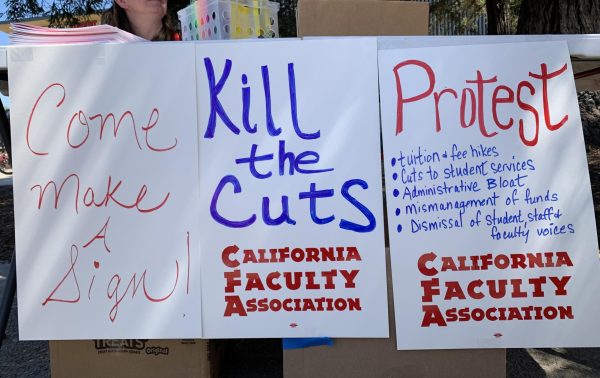
Despite these explanations, the California Faculty Association (CFA) and CSUEU members have voiced strong opposition to the layoffs. CFA conducted an on-campus protest on April 8, and CSUEU held a rally on April 14 to oppose the cuts.
At the protest, Professor of Sociology Dr. Ann Strahm explained that the CSU has stockpiled $8 billion in reserves instead of using the funds to prevent cuts. She said the system is choosing to reduce courses and lay off staff and faculty rather than prioritize educational needs.

“And so we spend our time, our money, our energy, not just teaching, not just learning from students, but participating in your well-being. And yet, we’re told none of that matters,” Strahm said.
Professor of Sociology Dr. Jey Strangfeld explained that reducing courses will affect the enrollment of students who have inflexible schedules due to factors such as caring for family, commuting and working, inhibiting these students from completing their degrees.
Strangfeld added how less funds for the campus can lead to an increase in tuition and fees, directly contributing to student debt.
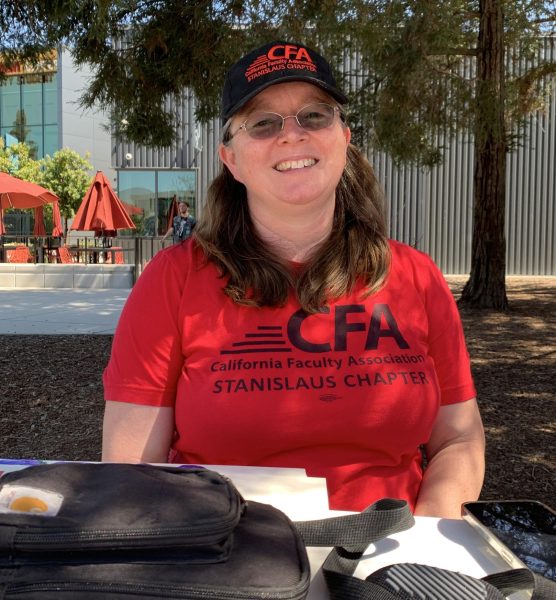
“The CSU system gets to have $8 billion in an account, while you are acquiring thousands of dollars of debt just to pay for your degree,” Strangfeld said. “That’s an example of how we think the priorities of the CSU are skewed.”
Nic Webber, chapter president for CSUEU and Stan State alumnus, advocates for layoffs of managerial roles rather than of staff that facilitate student success, as staff layoffs have not made a significant dent in the deficit.
“We need to be cutting more managers right now. There’s 108 managers total as of the last pay period. We could do with maybe half of them. We’ve got one department that is a one to one ratio; it’s one manager per every staff,” Webber said.

Some staff members at Stan State are also enduring reassignments where they are moved from one department to another with little notice.
“It’s a little upsetting,” said one reassigned staff member, who did not want to give their name for fear of retribution in this current climate. “It’s a little nerve-wracking. It makes the morale of things kind of low because we didn’t really get a say in where we were going, and it was kind of all of the sudden.”
CFA plans to have another demonstration on April 17 in the Quad. Strahm announced that they will have a coffin to eulogize the proverbial death of opportunities, class instruction and the 18 staff members who were laid off. She encouraged students to join the demonstration.

Strahm concluded, “When you murder education, you murder society, and I’m afraid that will happen.”
Update on April 17: Add sentence to clarify what one-time funds are.




